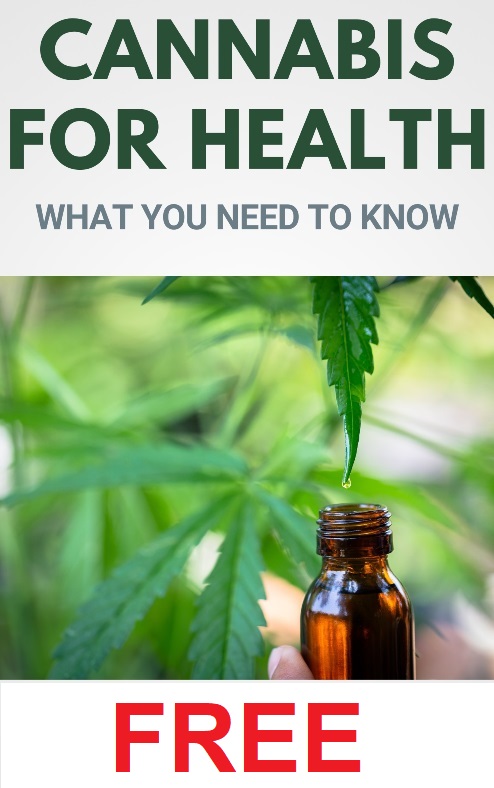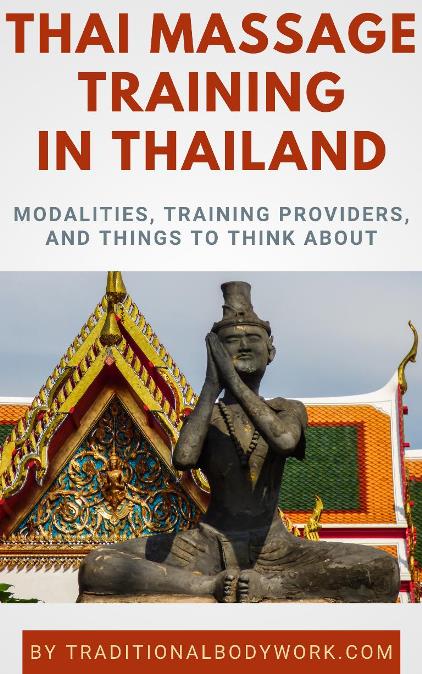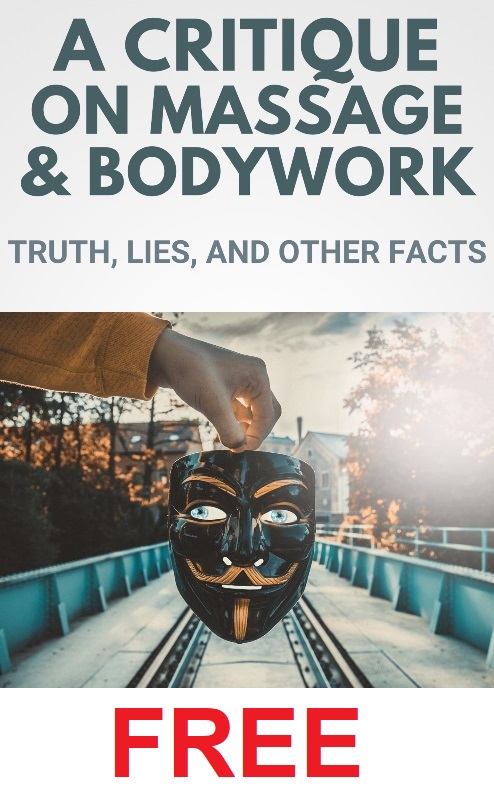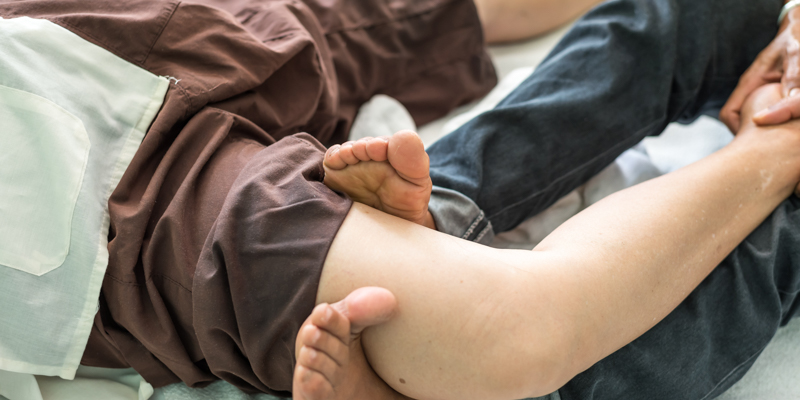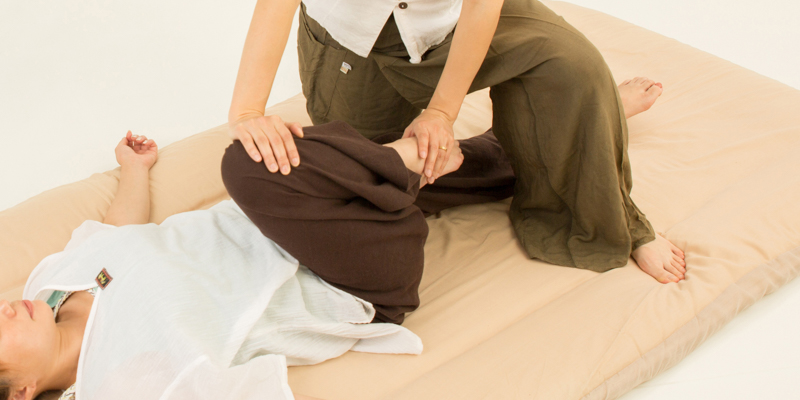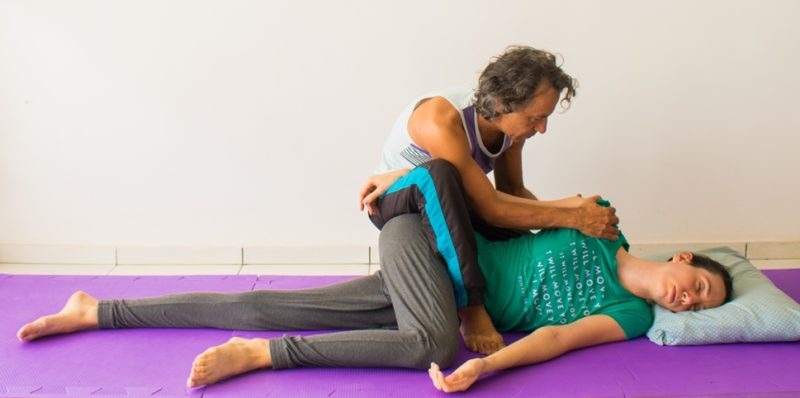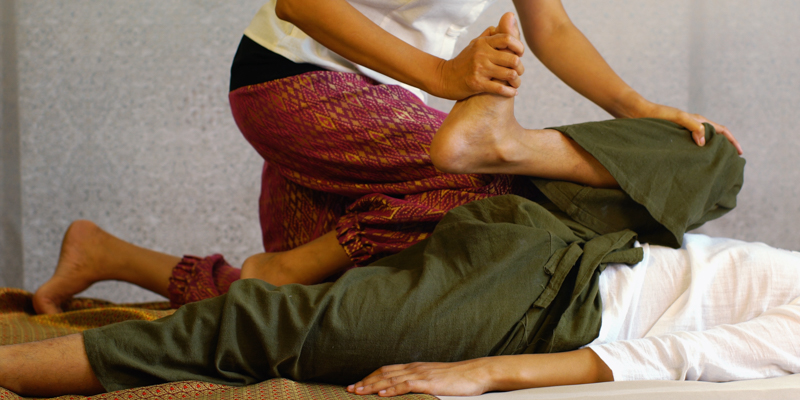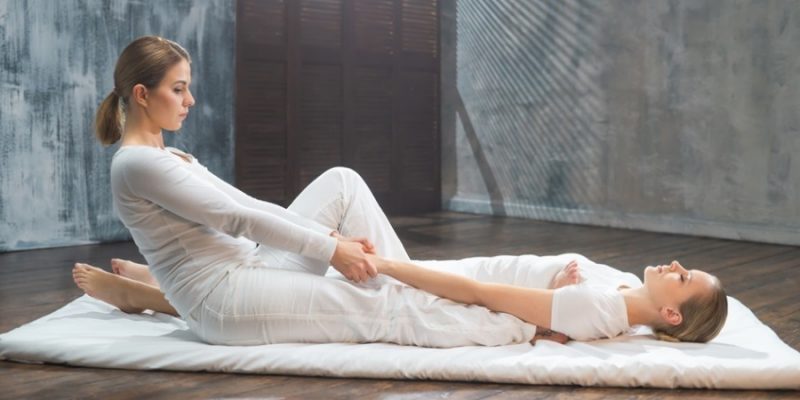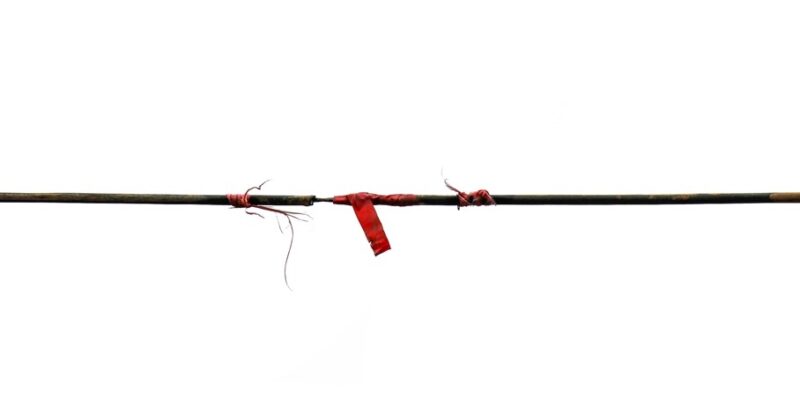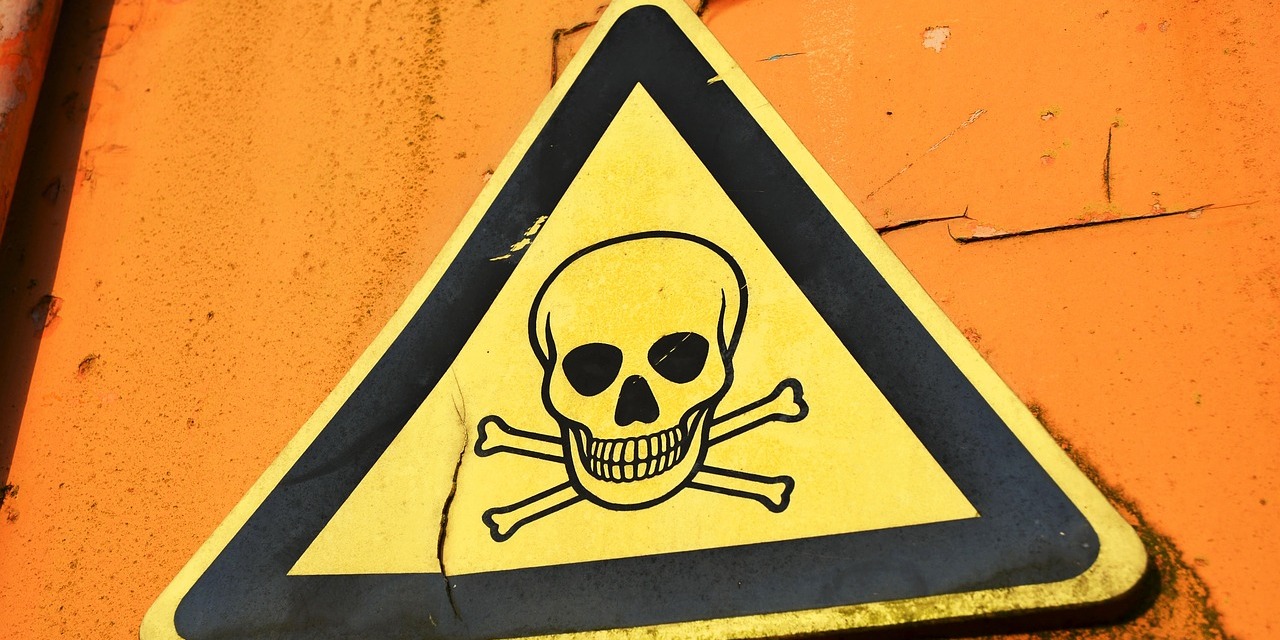
Now and again, we read or hear stories about clients or patients getting wounded or severely hurt (both temporarily and structurally), getting into the hospital, or in extreme cases even die after (or during) a Thai Massage treatment session.
It’s why the question if getting a Thai Massage is safe regularly pops up (especially right after media attention), and in this article I’ll guide you through a minimal, essential checklist to avoid the most common dangers and risks for the receiver.
Further Introduction
I was triggered to write this article because of a post of Pierce Salguero in a Facebook group where he referred to an article on The Straits Times called Massage can be dangerous for pregnant women: Thailand’s health ministry.
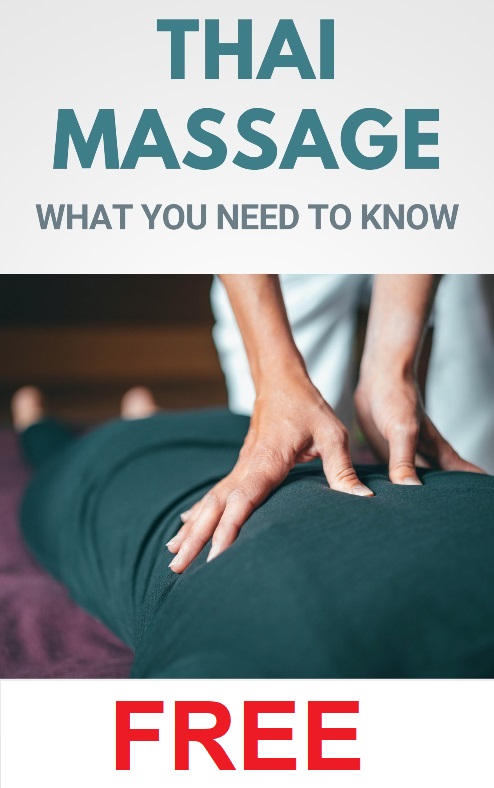
But first things first: let’s be honest and clear about this! Accidents happen with/within any healing profession, both with conventional medicine and complementary or alternative treatments. Troubles can come about due to negligence, inexperience or under-qualification of the practitioner, or just simply because of unknown factors and coincidences with regard to (the condition and circumstances of) the patient. Sometimes it’s just a matter of unforeseen “bad luck.”
I don’t know if Thai Massage is more prone to causing issues, but, depending on the style of Thai Massage, it’s surely deep bodywork with lots of (acu) pressure, stretches, twists, and the like. It can be quite intense, to say the least. It’s why any practitioner should act responsibly (i.e. being qualified) and should certainly have a liability insurance, because yes — shit happens… despite of all training, precautions and observed contraindications.
Surely, we don’t want to use our liability insurance, and that’s why I think we should always start with talking with the client and let him or her fill out an extensive (medical and historical) checklist before starting a session.
Nevertheless, I also know that talks and checklists don’t give hard guarantees to prevent problems (people tend to oversee or forget stuff and as said, we always have the “bad luck” factor) and besides that… sometimes we also “just give” in-between sessions to friends, family, or acquaintances without being fully on guard when it comes to “safety issues.”
Now, in past years, I talked with a number of very experienced Thai Massage therapists about this subject, of which some had practiced over 20 years already, and you bet, with no exception, they always had had some “weird and unfortunate” experiences. Below I will tell you some of those and some of mine.
The checklist below is certainly not all-inclusive. It’s just a QuickList, born out of my practitioner experiences. Read more about this subject in our previous article Precautions & Contraindications with Thai Massage.
The Quick Checklist
Thin Skin
One of the memorable experiences I had was with a client who started bleeding from under the lower parts of the jogging pants, slowly dripping on the floor. As it developed slowly, I saw things too late. I discovered she had large bleeding wounds on her shins, because of my treatment. What happened was that she had “thin skin” and the pressure on the lower legs “rubbed of her skin” and made her bleed severely.
Thin skin is a (medical) condition that can develop over years when getting older. It can be genetic also and affect young people. It’s also a thing people don’t always know about themselves. It’s very important for a Thai Masseur to pay attention to this because we massage over the clothes. We don’t see the skin. It’s why we should check this before starting the session. Check for thin, dry skin of body parts, especially the legs.
Quick Bleeders
More than once I had issues with “blue spots” on/under the skin, that is, with quick bleeders. There are simply (for a number of reasons) people who get their finer blood vessels easily popping. Always ask for this, ask also if they use “blood thinners” medication. You will find the latter now and again with people who have heart problems or “clogged” veins and arteries.
Internal bleeding can happen when you apply deeper work. It doesn’t mean you are doing something wrong necessarily, it’s also not necessarily dangerous and generally heals quickly when superficial, but it happens, it’s ugly, it’s discomfort, and clients get scared sh*t (not to talk about the client’s friends and family who think he or she had had a good beating…). In any case, it won’t do your reputation any good.
Varicose Veins
Always check visually and ask if people have varicose veins. You will see this more likely with people who have “standing” jobs, like for instance shop assistants, hairdressers, to name a few. But… anyone can develop those.
The problem here is that you don’t always see them on sight. Sometimes they run deeper in the body and can cause issues when applying deep thumbing acupressure. I had a problem once with this, with a client who got his left calf “blue and painful” for weeks after my deep acupressure sen-lines treatment on his legs.
Breaking Bones
This can happen in general with older people who get more fragile bones over time or people who have a condition called Osteoporosis. Often people don’t know they have a “fragile bones” issue until they break something in circumstances where it shouldn’t normally had happened.
Luckily, I didn’t experience “breaking any bones” in my practitioning career, but I know a former teacher of mine who broke a rib of an (older) client while applying pressure on the chest and needing to take her to the hospital in a hurry. He told me that it was definitely his most embarrassing experience as a therapist ever.
Squeezed Nerves
With deeper tissue work, sometimes, we “squeeze nerves” jamming them under/between bones or in-between contracted muscles, causing more pain. I had this I remember with a client with whom I was working on the gluteul area, better said, I was working on the Piriformis muscle which was compressing the sciatic nerve. In fact, I f*cked up badly apparently, or the client got even more tensed causing the issue, but in any case the pain on the sciatic nerve increased.
It took me half an hour of work relaxing the area, including the use of soothing talks, hot towels and compresses, to ease and make disappear the pain. Although things worked out fine, perhaps needless to say that I didn’t see this client returning to my practice.
Pregnant Women
Always ask if pregnancy is the case. And … just don’t do Thai massage work with pregnant women in the first three months and last month of pregnancy. And, in general, soft, diligent, cautious work in the other months, with a lot of things you just better don’t do with them. Perhaps superfluous to say — but no pressure on the abdominal area, no “blood stops,” no heavy twists and stretches, no poses and positions that pump blood to the heart or in any way make happen that heartbeat rate rhythms change.
Recent or Upcoming Operations and Open Wounds
Always ask. Avoid working directly with the affected areas.
Artificial Organs or Joints
Always ask. Avoid working directly with the affected areas. Treatment around the areas is usually not a problem, on the contrary, it’s often beneficial.
Active Cancers
Better not massage people with an active cancer. You may spread cancer cells through the body when applying deep tissue work or deep acupressure.
High Blood Pressure or Heart Problems

This one is tricky — many people deny they have a problem, because they use medication to reduce blood pressure or keep in check heart problems. It’s a thing you really need to ask after.
Many exercises in Thai Massage are not done in this case, especially no so-called “blood stops,” no heavy twists and stretches, no poses and positions that pump blood to the heart, increase blood pressure, or in any way change heartbeat rhythms.
Unluckily, I had one case where a women forgot to tell me she had a pacemaker to regulate heartbeat rhythms (how can you forget such a thing?), and she ended up in the hospital a few hours after I gave the session. In fact, her pacemaker went berserk. This also ended up fine — they “rebooted” her pacemaker and the day after she could leave the hospital like nothing happened.
Slipped or Artificial Vertebral Disks
Always ask for this and check if people have severe lower-back issues. Don’t do spinal twists or spinal cracks with these clients. You could end up paralyzing them. I personally never had any real issues with clients, because it’s a thing I’m very careful about and very aware of as I have had severe lower back problems in the past myself.
Getting a Massage in Thailand
A separate chapter about getting a Thai Massage in Thailand is certainly not a luxury. Thailand is both the best place and the worst place to have a Thai Massage. As massage is an easy commercial pocket-filler (“anybody can do it or pretend doing it”), we see a whole lot of inexperienced or unqualified practitioners in Thailand making money on tourists. On the other hand, there are very, very good Thai Healing treatments and therapists to be found.
Read more about this subject in our article Where to Get the Best Thai Massage in Thailand?
Final Considerations
As said already, the checklist above is just a subset of all things one needs to think about before doing a session. Read more about this in our article Thai Massage Precautions & Contraindications.
Moreover, follow the instructions you received during your Thai Massage training, keep doing research and stay up-to-date, and don’t forget to always use your common sense.



